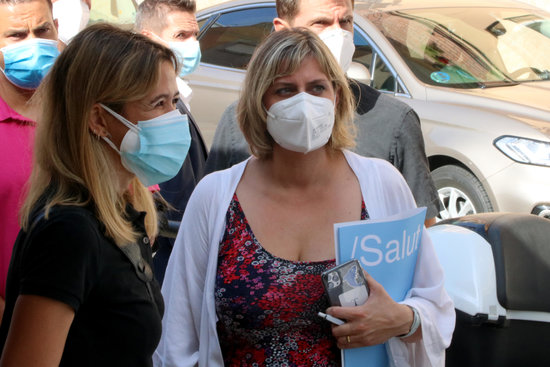Enhanced Covid-19 restrictions still in application in Barcelona and Lleida areas
Reus and parts of Vallès Oriental also affected

The measures to prevent the spread of Covid-19 passed on August 18, including a limitation of smoking in public and the curfew on restaurants, are to be added to those already in operation across Catalonia, such as the obligation to wear face masks and the closure of night clubs.
Yet at the same time, some of the measures imposed on certain areas in the country in early July are still in operation.
While these extra restrictions no longer apply to Figueres and Vilafant (in the northeastern Alt Empordà county) from August 17, they were extended for two weeks on August 14, and again on September 1, for fifteen municipalities in the Barcelona metropolitan area and much of the western Segrià and Noguera counties.
On August 22 additional restrictions were put in place for the city of Reus in the south of Catalonia, and from August 25, these measures were extended to three towns in the Vallès Oriental area, north of Barcelona.
Take a look at this guide, last updated on September 1, 2020:
Where it applies
The measures apply to 3.31 million people in Catalonia, which means 43% of the country's inhabitants.
- Barcelona's metropolitan area (2.87 million people): Barcelona, l'Hospitalet de Llobregat, Montcada i Reixac, Viladecans, el Prat de Llobregat, Sant Boi de Llobregat, Sant Joan Despí, Cornellà de Llobregat, Sant Just Desvern, Esplugues de Llobregat, Santa Coloma de Gramenet, Sant Adrià del Besòs, Badalona, Sant Feliu de Llobregat, Gavà and Castelldefels.
- Segrià county (203,000 people): els Alamús, Albatàrrec, Alcanó, Alcoletge, Alfarràs, Alfés, Alguaire, Almacelles, Almatret, Almenar, Alpicat, Aspa, Corbins, Llardecans, Maials, Montoliu de Lleida, la Portella, Puigverd de Lleida, Rosselló, Sudanell, Sunyer, Torrebesses, Torrefarrera, Torre-serona, Vilanova del Segrià, Vilanova de la Barca, Sucs and Raimat. Also, in Lleida, Aitona, Alcarràs, la Granja d’Escarp, Seròs, Soses and Torres de Segre, where tighter restrictions apply as well.
- Noguera county (30,000 people): Àger, Albesa, Algerri, les Avellanes i Santa Linya, Balaguer, Bellcaire d'Urgell, Bellmunt d'Urgell, Camarasa, Castelló de Farfanya, Cubells, Ivars de Noguera, Menàrguens, Montgai, Os de Balaguer, Penelles, la Sentiu de Sió, Torrelameu, Térmens and Vallfogona de Balaguer.
- Baix Camp (104,000 people): Reus.
- Vallès Oriental (98,000 people): Canovelles, Granollers and les Franqueses del Vallès.
Recommended
Generally speaking, the public in these areas is advised to stay at home.
It is recommended that people only leave the house for the following reasons: to work, for health and care reasons, to buy essential food and drink, to go to the bank, for other purchases by appointment, to do sport outdoors, to look after allotments and for force majeure, as well as procedures that cannot be postponed, like exams, renewing ID and permits.
Banned
Meetings of over 10 people in both private and public are prohibited, except for work or on public transport.
Allowed but with restrictions
Bars and restaurants can open, but with a maximum capacity of 50%, both indoors and outdoors on terraces.
Hotels and tourist apartments are also allowed to operate, but with 50% capacity in communal areas.
Shops are recommended to only accept clients by appointment.
Places offering cultural events and shows, as well as establishments offering fun activities, sports centers, gyms and similar can only open up to 50% of their capacity.